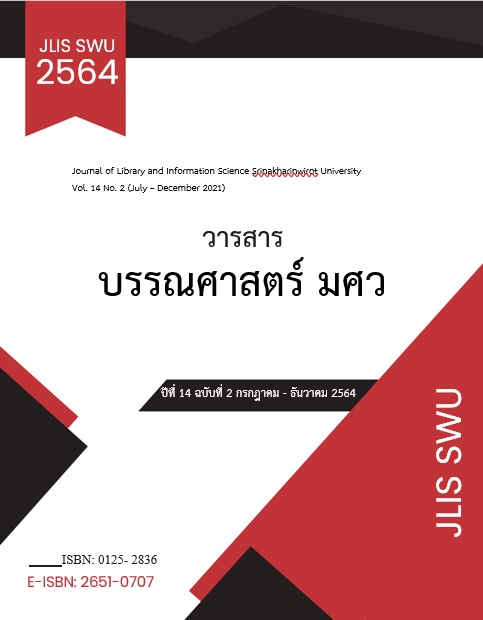Assessment of the Current State and Needs Related to Development of Information and Communication Technology skills in 21st Century Learning Management for Municipal School Teachers, The Local Administrative Organization, Yala Province
Keywords:
Need Assessment, Information and Communication Technology skills, 21st Century Learning Management, Municipal School Teachers, Yala ProvinceAbstract
This research aims to study The Assessment of the Current State and Needs Related to Development of Information and Communication Technology skills in 21st Century Learning Management for Municipal School Teachers, The Local Administrative Organization, Yala Province. The samples used in the study were 148 teachers of municipal schools in Yala Province and using the questionnaires consisted of 1) The general information of teachers and 2) The current state and needs related to development of Information and Communication Technology skills in 21st Century Learning Management. The data were collected through the questionnaires and analyzed the descriptive statistics such as frequency, percentage, mean, standard deviation, T-Test and The modified Priority Needs Index (PNI Modified) was used for needs assessment. The research results found that Most of the teachers are in the age range of 41-50 years with a bachelor's degree. They have 11-15 years of teaching practice experience. They use smart TV devices to organize learning activities in the classroom. The current state and needs assessment, it was found that The most of need is technology supports teaching and learning activities (PNImodified = 0.31) in terms of stable internet network in schools. have a constant speed and efficiency (PNImodified = 0.51), where the mean between the actual condition and the need for all four aspects was statistically significantly different at the .05 level.
References
Management and Commerce Innovations, 4(1), 24-31.
Department of Education Yala City Municipality. (2020). The general and basic information of Yala City
Municipality. Retrieved January 15, 2021, from http://www.yalacity.go.th/themes/default/general
.pdf (In Thai)
Krejcie, R. V. & Morgan, D. W. (1970). Determining Sample Size for Research Activities. Educational and
Psychological Measurement, 30(3), pp. 607-610.
Ministry of Information and Communication Technology. (2016). Strategic Ministry of Information and
Communication Technology Plan 2016-2019. Retrieved June 01, 2021, from https://moc.
ocsc.go.th/sites/default/files/00_1_krathrwngethkhonolyiisaarsnethsaelakaarsuuesaar_59.pdf
(In Thai)
Office of the National Economic and Social Development Board. (2017). The National Economic and
Social Development Plan: The Twelfth Plan (2017-2021).Retrieved June 03, 2021, from
https://www.nesdc.go.th/ewt_news.php?nid=6420&filename=develop_issue (In Thai)
Panich Wijarn. 2012. Way of Learning for Students in the 21st Century. Retrieved January 25, 2021, from
https://www.teenpath.net/data/r-article/00004/tpfile/00001.pdf (In Thai)
Pheeraphan N, et al. (2017). Development of guidelines for promoting and improving information and
communications technology competencies for Thai teachers in the 21st century (Research
Report). The Thailand Research Fund.National Research Council of Thailand. Bangkok, Thailand.
(In Thai)
Sinlarat, Paitoon. (2013). Thai Education 4.0 : Creative and Productive Education. (2nd ed.). Bangkok:
Chulalongkorn University Press. (In Thai)
Wongwanich, Suwimon. (2015). Needs assessment research. (3rd ed.). Bangkok: Chulalongkorn University
Press. (In Thai)
Additional Files
Published
Versions
- 21-01-2022 (3)
- 21-01-2022 (2)
- 03-01-2022 (1)
Issue
Section
License
Copyright Notice
Copyright of articles in the journal of Journal of Library and Information Science Srinakharinwirot University is the author's and the Faculty of Humanities, Srinakharinwirot University. All articles submitted for publication will be assessed by a group of distinguished reviewers. The Faculty of Humanities, Srinakharinwirot University and the editorial board claim no responsibility for the contents or views expressed by the authors of Individual articles. Copying is allowed freely, provided acknowledgement is made thereof, and within the scope of copyright law.


